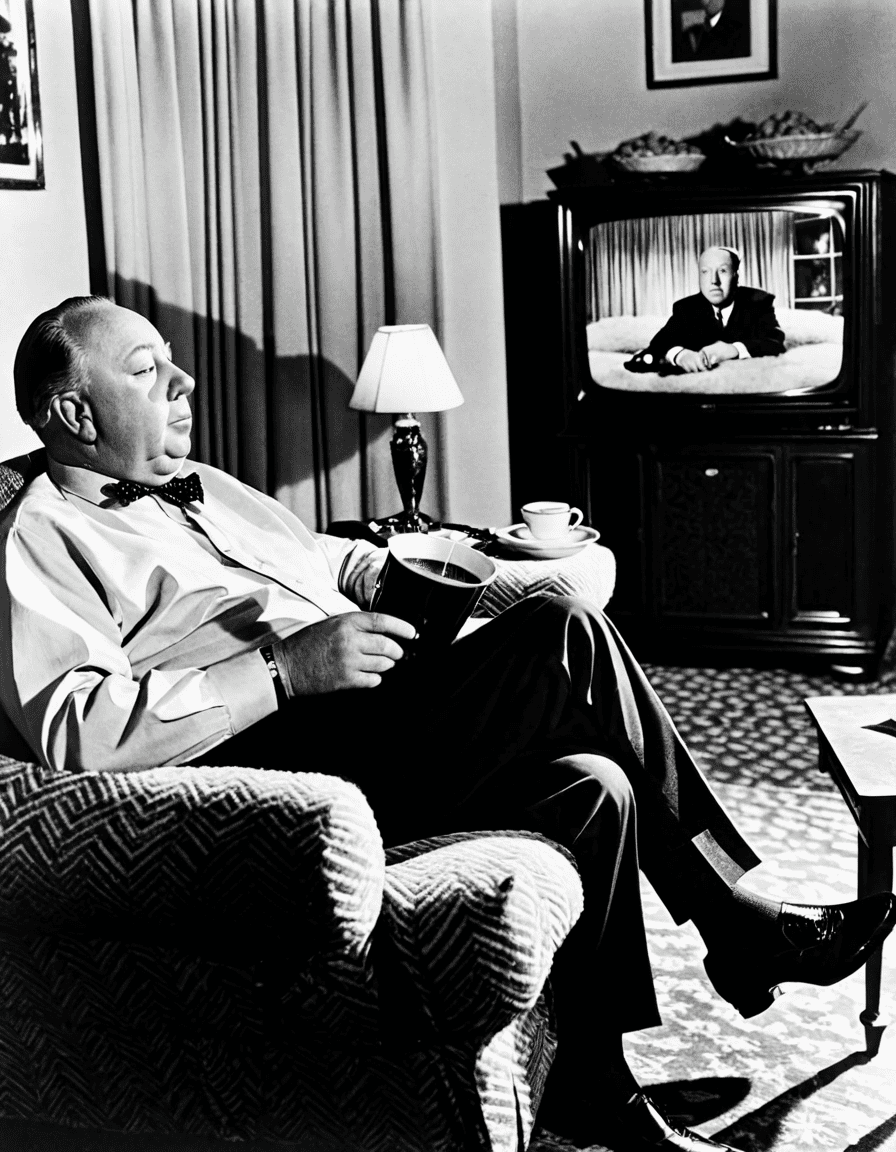When You hear the name Alfred Hitchcock, you probably think of suspense, thrills, and edge-of-your-seat storytelling. His legacy as the ‘Master of Suspense’ has paved the way for countless filmmakers and actors, leaving an indelible mark on cinema. Hitchcock’s approach to filmmaking, characterized by innovative techniques and psychological depth, continues to influence genres all the way from psychological thrillers to contemporary dramas. Buckle up for a dive into the seven essential elements that define Hitchcock’s mastery, and see how his work resonates in today’s cinematic landscape!

7 Essential Elements That Define Alfred Hitchcock’s Mastery of Suspense
Hitchcock’s genius isn’t just an umbrella term; it’s a detailed playbook filled with techniques that have become staples in filmmaking. Here are the top seven elements that stand out in his artistry.
1. The MacGuffin: A Storytelling Device
Let’s kick things off with the MacGuffin. This clever narrative device—an object or event that drives the plot forward—might seem trivial, but it plays a crucial role in Hitchcock’s storytelling. Take “North by Northwest,” for instance. A mere microfilm sparks an entire chain of events, catapulting our hero, Roger Thornhill, into a tangled web of intrigue. The MacGuffin keeps audiences engaged while the real story unravels just behind the scenes.
2. Psychological Depth: A Study in Characters
Now, if you’ve ever felt a chill while watching Psycho, it’s thanks to Hitchcock’s deep dive into psychological tension. Take Norman Bates, portrayed hauntingly by Anthony Perkins. His elaborate characterizations explore dual identities and insane obsessions, inviting viewers to battle with their own understanding of sanity. This exploration of flawed, complex characters laid the foundation for other actors, like Alfred Molina, who has skillfully tackled intricate roles in films like “Spider-Man 2.”
3. Innovative Cinematography: Framing the Suspense
Hitchcock also revolutionized cinematography by inventing techniques that heighten suspense. The famed ‘Vertigo effect’ is a prime example—by mastering the art of zooming in while dolly-zooming out, he creates an unsettling experience. This artistic approach set the stage for directors like Orson Welles, who utilized dynamic camera work in “Touch of Evil” to ramp up tension in his films.
4. The Role of Sound: An Auditory Experience
When it comes to sound, Hitchcock turned it into a character in its own right. The spine-chilling score of “Psycho,” particularly the screeching violins in the shower scene, sends shivers down your spine. That’s not just sound design; it’s an auditory experience that elevates horror. Modern thrillers owe a debt to this radical sonic approach, which continues to inspire today’s composers and sound designers.
5. Unpredictable Twists: The Element of Surprise
If you’re looking for thrills, you undoubtedly want surprises, and Hitchcock was a pro at keeping you guessing. The hair-raising twists in his films not only boggled minds in his time but laid the groundwork for future classics. Think of M. Night Shyamalan’s “The Sixth Sense”—the way it reveals its big twist pays homage to the careful clues laid down by Hitchcock. Audiences remain on their toes, wondering what the director will pull out next.
6. Impeccable Editing: Building Tension
Let’s not forget about editing—the backbone of creating suspense. Hitchcock knew this well. The infamous shower scene in “Psycho,” with its rapid cuts, crafts a dizzying sense of panic that stays lingering in viewers’ psyches. This technique has inspired numerous editors through the ages, including those who worked on Robert Mitchum‘s intense performances, helping to build narratives filled with nail-biting tension.
7. The Allegorical Narrative: Beyond Surface Stories
Finally, Hitchcock didn’t stop at entertainment; he made statements. His films, like “Rear Window,” go beyond surface stories to tackle deeper themes, like voyeurism and human curiosity. This layered storytelling style has encouraged audiences to ponder life’s complexities, something portrayed in both classic films and today’s thought-provoking cinema.

Alfred Hitchcock’s Legacy in Modern Cinema
The ripple effects of Hitchcock’s talent are deeply woven into the fabric of modern filmmaking. His sense of suspense molds the narratives we consume today, influencing contemporary directors like David Fincher and Christopher Nolan. They skillfully craft thrillers packed with tension and multi-dimensional characters in a way that mirrors Hitchcock’s cinematic blueprint. He set the standard, and filmmakers today are still striving to reach those heights.
Actors, too, benefit from Hitchcock’s character-building techniques. Robert Mitchum’s menacing presence in “Cape Fear” echoes Hitchcock’s enigmatic villains—characters who wield psychological manipulation as craftily as any seasoned puppeteer. You can clearly see how modern actors like Alfred Molina continue to channel these aspects, enriching roles that demand complexity and substance.
In conclusion, Alfred Hitchcock’s mastery of suspense and thrills is a delicate mix of craftsmanship, innovation, and exploration of the human condition. With his pioneering techniques influencing everything from story structure to character development, his work raises the bar for storytelling. As filmmakers and audiences reflect on Hitchcock’s enduring impact, it’s clear that themes of fear, obsession, and psychological exploration will remain captivating for generations to come. So, the next time you settle in for a movie night, just remember that every shadow and gasp might just be a nod to the one and only Alfred Hitchcock.
Alfred Hitchcock: The Master of Suspense and Thrills
Hitchcock’s Signature Style
Alfred Hitchcock’s cinematic fingerprint is unmistakable, as he elevated storytelling into a thrilling art form. His movies often featured a blend of tension and dark humor, a hallmark that kept audiences on the edge of their seats. One of his least-known techniques was the use of “Montage” to build suspense, a method he famously used in classics like Psycho. Interestingly, his meticulous attention to detail can be compared to the precision found in a well-crafted pink panther caper, where every element matters.
Befitting his unique style, Hitchcock was also the king of cameos, showing up in almost all of his films. Speaking of iconic appearances, Richard Gere’s roles, as detailed in the list of his movies, means You can compare that star power with Hitchcock’s delightful interruptions. These cameos added a playful element that transformed the anticipation of seeing the master himself into part of the viewer’s experience.
Behind the Scenes of Suspense
Did you know that Alfred Hitchcock had a passion for the peculiar? He famously had a phobia of eggs, which is as surprising as the bizarre monster Trucks he might have enjoyed seeing in action. Moreover, many of his films explore the psychology of fear and desire, which he often portrayed through broader themes of obsession, much like the complex relationships seen in soap operas like bold And The beautiful. His keen insight into human nature allowed him to create characters that resonated deeply with audiences.
Another fascinating tidbit is how Hitchcock often collaborated with the same actors, creating a familiar chemistry on screen. Much like the strong ensemble cast of Fast And Furious 6, his consistent partnerships elevated many of his projects. Additionally, he’s known for his groundbreaking use of camera techniques, influencing countless filmmakers including today’s talents, who continue to reference Hitchcock’s style. Actors such as Barry Keoghan might even point to him as inspiration when shaping their performances.
The Legacy of Alfred Hitchcock
It’s no wonder that Alfred Hitchcock remains a benchmark for suspense and storytelling; his influence stretches far beyond his films. His masterful ability to evoke tension is echoed in contemporary shows, akin to the gripping storytelling found in The and its suspenseful arcs. His films did more than entertain; they explored psychological complexity, inviting viewers into a world of fear and fascination.
So the next time you watch an edge-of-your-seat thriller, remember it’s not just about the plot twist; it’s about experience—the way Hitchcock’s art continues to inspire filmmakers and actors alike, shaping the thrill of cinema for generations to come. Much like the way neck bones evoke nostalgic comfort, his films linger in the minds and hearts of audiences around the world. As you delve into his works, you might just discover that every frame tells a deeper story waiting to be unraveled.




